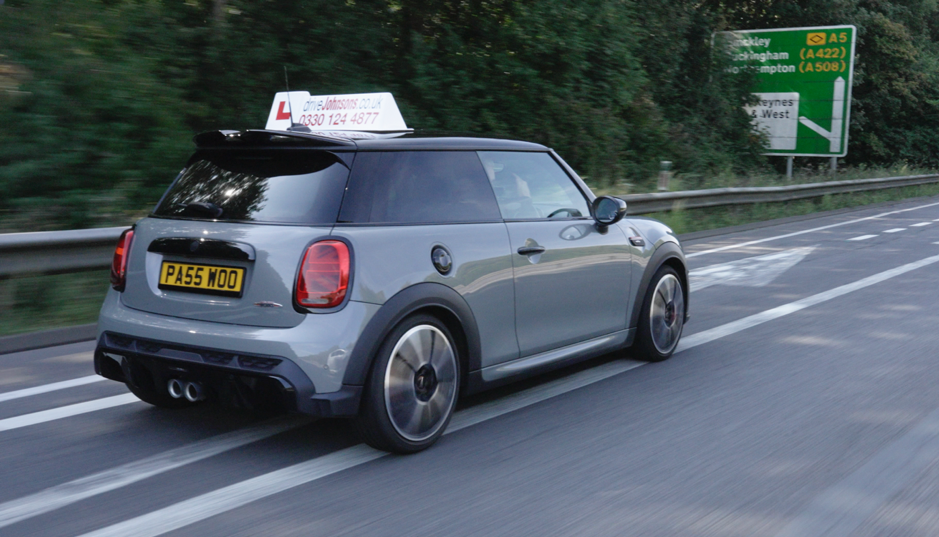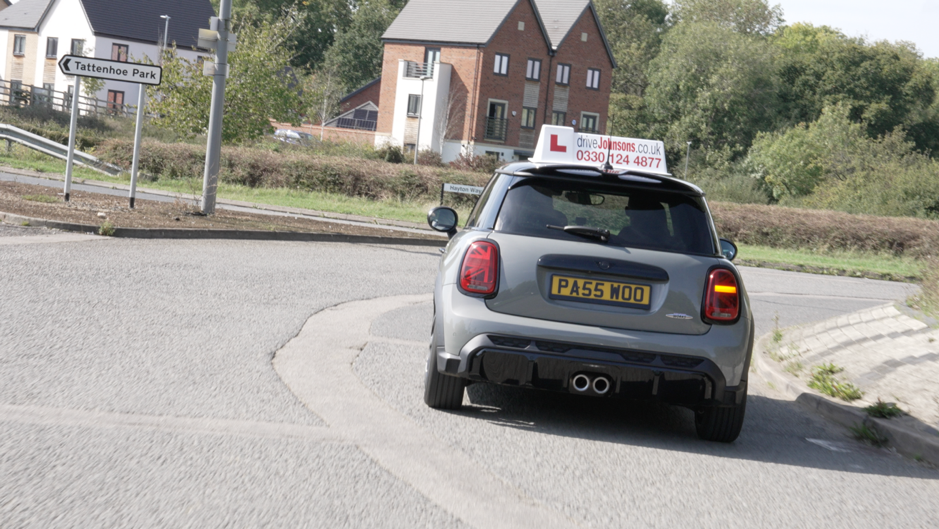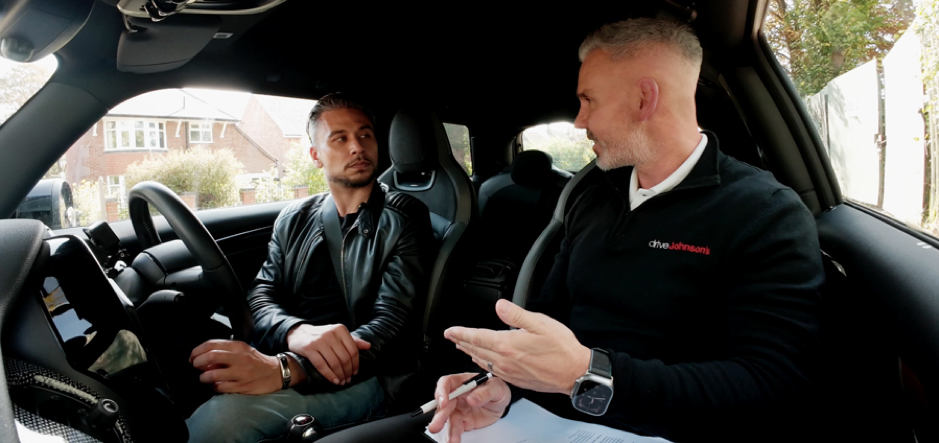From Monday, 24th November 2025, the driving test will change, giving examiners the option to ask learners to drive independently for anything between 20 minutes and the full duration of the driving test.
This means some tests may start from the test centre and continue using the sat nav for the entire drive.
In other cases, learners may be asked to follow a mixture of sat nav directions and traffic signs.
- What is independent driving?
- What is the independent driving section testing?
- How the sat nav section of the test works
- How the road sign section works
- What if you go the wrong way?
- How to prepare for the independent driving section
- Problems that may occur on the driving test with the sat nav
- Our top tip
- TomTom settings for the driving test
- Why has the DVSA implemented independent driving in the UK test?
What is independent driving?
Independent driving lasts between 20 minutes and the full duration of the driving test, during which candidates are asked to drive by following either:
- Directions from a sat nav
- Directions following traffic signs
- A combination of both
The examiner will set up the sat nav and provide initial instructions. Once the car is moving, the examiner will simply observe the learner following the route.
The main objective is to see whether the learner can follow directions while driving safely. This applies whether they are taking driving lessons in Manchester amongst busy city traffic or somewhere out in quieter, rural Wales; they will be expected to be able to navigate by themselves using the satnav and road signs. This requires forward planning, such as glancing at the sat nav in advance and familiarising themselves with the next junction or manoeuvre before they reach it.
What is the independent driving section testing?
Driving with responsibility and making realistic decisions
With the examiner remaining silent and not giving directions every 30–60 seconds, the learner is effectively on their own, just as they will be once they have passed the test.
They must interpret signs, respond to road layouts, and plan ahead without continuous guidance.
Navigating unfamiliar or tricky areas
During the test, a complex junction may appear with little warning. The sat nav imagery can help, but the learner must still read the map, understand the upcoming layout, and follow the required direction safely.
When negotiating more complex environments, some learners focus too much on the sat nav and forget to observe traffic around them. This increases the risk to themselves and other road users.
Ability to handle distractions
If a learner is only used to following their instructor’s verbal directions, the background voice of the sat nav may become distracting. The test checks whether they can manage this while maintaining safe driving.
How the sat nav section of the test works
Setup
The examiner uses a standard device (a TomTom Start 52) mounted securely. Learners are not allowed to use their own sat nav or mobile phone.
Instructions
The examiner will say something like:
“We’re going to start the independent driving section of the test. I’d like you to follow a series of directions from the sat nav, and continue to follow it until I tell you otherwise. Drive on when you’re ready.”
How the road sign section works
The examiner will usually pull the learner up to the side of the road before giving instructions.
For example:
“I’d like you to follow the traffic signs for Nottingham, and continue to follow the signs until I tell you otherwise. Drive on when you’re ready, please.”
What if you go the wrong way?
This is one of the biggest learner concerns, so it’s important to be clear:
Going the wrong way does NOT mean you fail.
The DVSA states that taking a wrong turn is not a fault as long as it is done safely. If the learner:
- Checks mirrors
- Signals correctly
- Positions properly
- Performs the manoeuvre safely
The examiner may let the sat nav re-route or take control of the directions temporarily.
You would only receive a fault if going the wrong way leads to:
- Dangerous lane changes
- Sudden braking
- Unsafe hesitation
- Ignoring road markings or traffic signs
Below is a video released by the DVSA which explains what happens on the driving test, including the independent driving.
How to prepare for the independent driving section
- Practise using a TomTom Start 52 sat nav. Using the exact device helps familiarise you with the same prompts and screen layout you’ll experience on test day.
- Use the sat nav when practising complex junctions. This includes double roundabouts and spiral roundabouts with fourth or fifth exits.
- Don’t rely 100% on the sat nav. Get used to scanning road signs as well: there may be helpful markings or warnings the sat nav won’t show.
- Practise longer, unfamiliar routes. Driving with a friend, family member, or instructor to a different town or city helps develop planning, awareness, and adaptability.
- Practise going the wrong way safely. If you miss a turn, learn how to stay calm and continue safely. This reduces panic if it happens during the test.
Problems that may occur on the driving test with the sat nav
- Two junctions close together may be confusing. If you’re unsure which turning the sat nav means, ask the examiner; they’re allowed to clarify.
- The examiner may ask you to ignore the sat nav temporarily. This could be because of a sat nav glitch or roadworks. Always follow the examiner’s instructions when they intervene.
- Battery issues. If the sat nav battery runs out, the examiner will use a power bank or charger. If needed, they may switch to verbal directions or ask you to follow traffic signs.
- Sat nav malfunction (e.g., no sound). The examiner will intervene and give instructions verbally.
- “You have reached your destination.” Do not slow down or pull over unless instructed. Continue driving normally until the examiner tells you to do something else.
- Double mini-roundabouts may be misread by the sat nav. Sometimes the sat nav treats them as one. The examiner may step in briefly to ensure safety, then return you to following the sat nav.
- Sat nav positioned awkwardly. If the sat nav is placed where you can’t see it comfortably, you may request that it be moved, as long as it doesn’t block your view of the road.
Our top tip
It’s always safer to listen to the directions from the sat nav than to look at the display. If you are unsure, then glance at the sat nav quickly, then recheck the road ahead. Avoid staring at the sat nav.
We find that a lot of our learners, whether they’re taking driving lessons in Leicester, Eastbourne, or anywhere else we cover, instinctively come off the gas when looking at the sat nav. This isn’t so bad if you have checked the mirrors first, and it’s okay or necessary to come off the gas, but many do it as a knee-jerk reaction. With cars following behind, you may receive a driving fault for progress or something else on the making sheet.
TomTom settings for the driving test

Why has the DVSA implemented independent driving in the UK test?
Many years before phones were around, we used to use a map or simply pull up and ask someone for directions when the map was out of date, or we got lost.
However, as the population of the UK grows, and the world evolves, we use technology more than ever to help us on our journeys from A to B. Using modern sat navs or our smartphones enables us to avoid congestion and road accidents so we can get from A to B on time and safely.
Although the driving test has yet to move on to using smartphones for the sat nav part, it’s using the next closest thing, which is sat nav devices. Practising this in your lessons and then being tested on it helps you prepare for the real world of driving, where using a sat nav is almost essential when going to a new area you don’t know.
You will learn in your lessons how important it is to use smart devices whilst the car is stationary and how to navigate yourself back on route, if you end up in the wrong lane, for example. You could even end up in the wrong lane on the day of your driving test, too. Hopefully, your instructor would have trained you to continue to drive safely and get back on route safely.
Using a sat nav is such an integral part of today’s life that even our driving instructors in London use their sat navs for their next pupil’s lesson, so that they are on time.
Final thoughts on the independent driving part of the test
Independent driving might sound a bit daunting at first, but once you’ve had a bit of practice with your driving instructor, it will become just another part of the test that you can absolutely handle.
On the big day, trust your training, take a breath, and pay attention to the sat nav and signs along the way. Remember, this is setting you up for driving after your test; it is not aimed at catching you out. Drive safely, show your driving skills, and you will be fine.









